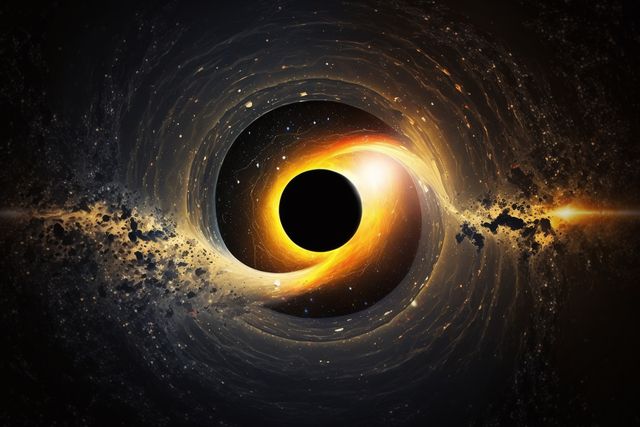Located just 2,000 light years away, BH3 is now the largest known stellar black hole in our galaxy, weighing 33 times the mass of the sun.
In a groundbreaking discovery, astronomers have identified the largest stellar black hole within the Milky Way, named BH3, positioned a mere 2,000 light years from Earth in the constellation of Aquila. This significant find was made possible through the European Space Agency’s Gaia mission, which aims to map a billion stars in three dimensions.
The black hole, which emerged from the remnants of a massive star, exhibits a gravitational pull strong enough to visibly affect the orbit of a nearby companion star. This unusual movement caught the attention of scientists reviewing the latest Gaia data, leading to the discovery of BH3. Dr Pasquale Panuzzo, from the Observatoire de Paris and a member of the Gaia collaboration, expressed his astonishment at the find, highlighting BH3’s mass and proximity within our galaxy.
Unlike Sagittarius A*, the supermassive black hole at the centre of the Milky Way, BH3 formed from a collapsing star rather than from the accretion of gas and dust. Observations using the Very Large Telescope in Chile confirmed that BH3’s companion star orbits it every 11.6 years, establishing BH3 as the second most massive black hole known in our galaxy, only surpassed by the central Sagittarius A*.
This discovery not only enhances our understanding of stellar black holes but also bridges a gap with gravitational wave research, which has previously detected similar mass black holes in distant galaxies. The characteristics of BH3 align with those observed through gravitational waves, suggesting a commonality that extends beyond our galactic neighborhood.
Dr. Panuzzo noted the rarity of such discoveries, as most stellar black holes in the Milky Way do not have orbiting stars, rendering them nearly invisible. The clean spectral analysis of BH3’s companion star further suggests that the black hole had formed long before capturing its stellar neighbour, providing a pristine example of black hole evolution without external material interference.
The international research team has expedited the release of their findings to allow the global astronomical community to conduct further observations. These efforts will focus on detecting any emissions from the area around the black hole, which could reveal more about the surrounding stellar winds and the fundamental physics of how matter is absorbed by such massive entities.
The next set of data from the Gaia mission is expected in late 2025, but the early reveal of BH3 underscores the importance of this discovery in advancing our comprehension of celestial mechanics and the dynamic processes within our galaxy.
